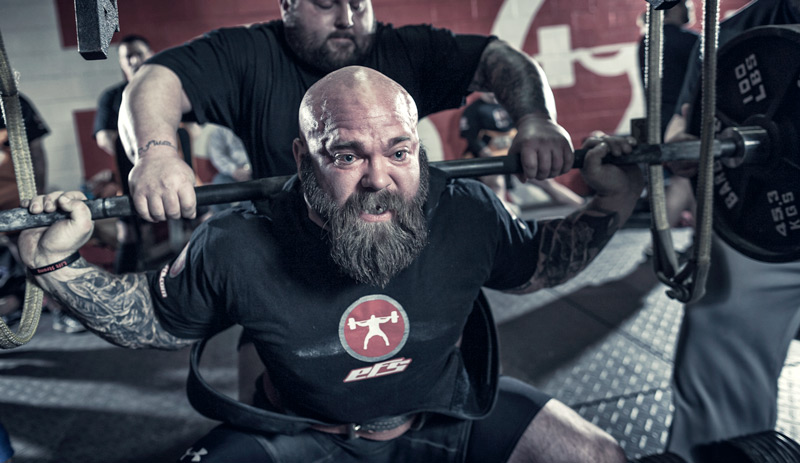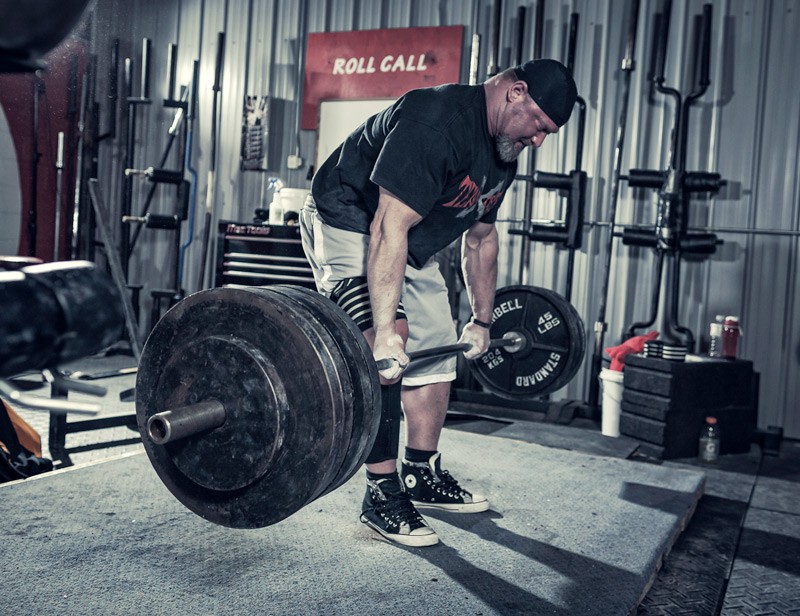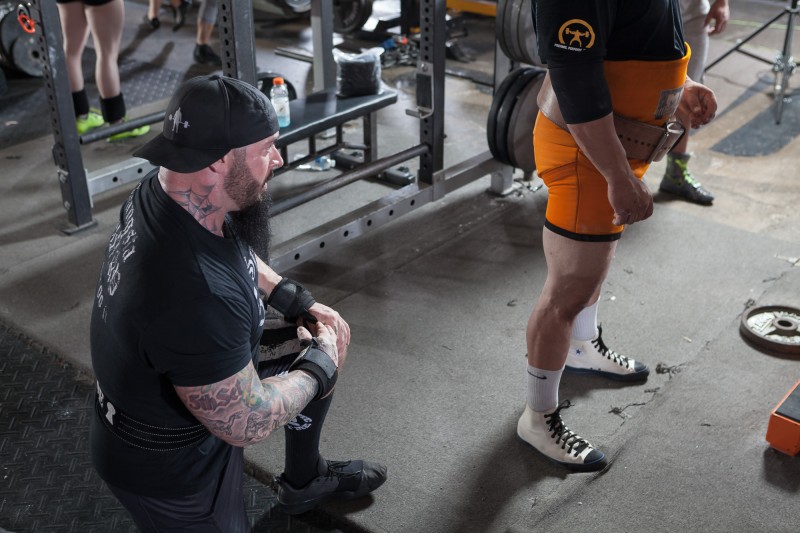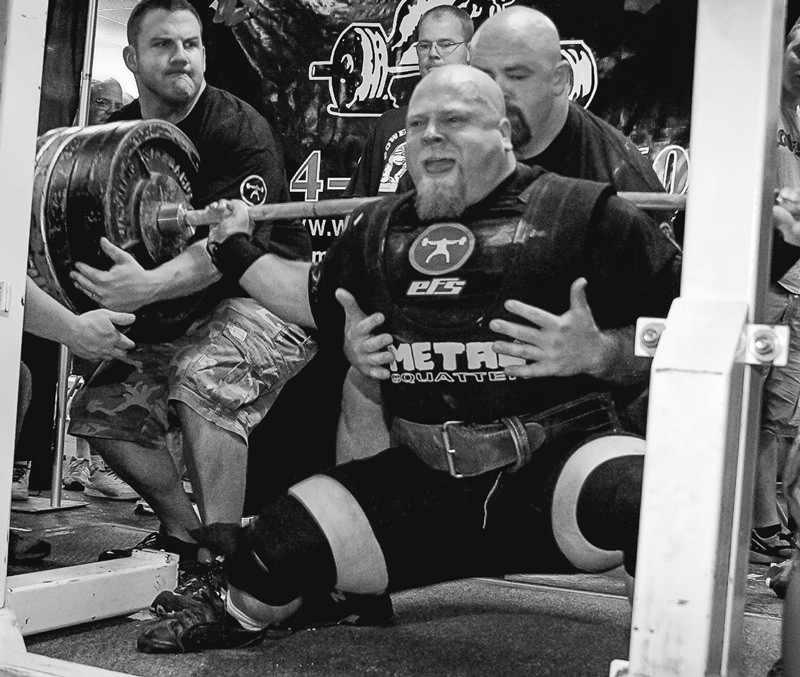
I decided to follow up with the lifters that were featured in Bryan Kahn’s “Price of the Platform” to see how they are doing.
You may remember Keith, whose shoulder and bicep pain was so bad he wouldn’t keep a gun in his bedroom, fearing that he may use it on himself. Vicodin kept the pain at bay to the point of addiction. He feared living without it. His collapsed shoulders no longer held the weight of the bar; instead, they bore the weight of struggling to live a normal life.
RECENT: The Biggest Pitfalls of Powerlifting
Eddie ripped his groin off the bone, ruptured a kneecap, and tore his biceps and triceps. His worst injury almost resulted in him losing an eye while getting ready for a PR. But that wasn’t the worst part for him — that came in the form of syringes filled with testosterone. He didn’t want to know what his T-levels looked like.
There was also Giles, who left the powerlifting world with a few disc and hip issues. His biggest problem came from a swift weight loss in an attempt to make weight. The loss of 17 pounds came at a high cost: atrial fibrillation. In “Price of the Platform,” Giles said he had to be shocked back to life 12 times.

Charlie regretted how much powerlifting took away time from his wife. Taking AAS with either Dianabol or Anadrol didn’t help his relationship — or his sex life, for that matter. Even though he didn’t take anything close to the amount Eddie or some of the biggest and best lifters took, it didn’t matter. The damage was done.
The wear and tear of the sport doesn’t end when the lifter stops competing. The price of the platform may be one that they will pay for throughout the rest of their lives.
When I asked these lifters about new surgeries and issues over the past five years, this is what I discovered:
- 2 C-spine spinal fusions
- 5 hip replacements
- 2 knee replacements
- 1 shoulder replacement
- 1 partial shoulder replacement
- 2 divorces
- 1 ascending aorta dilation
- 1 coronary artery disease
- 1 catheter ablation for arterial flutter
- 4 catheter ablations for afib
- All have increased arthritis
- All are on HRT due to rock-bottom testosterone levels
- 1 suicide
The pain is better with all of them, but they all have changed the way they train, and all but one still train.
In this small group, it is clear that the joint wear and tear doesn’t rear its head until after the lifters retire, and in many of the cases, it took five to ten years before it hit.
I knew that they would do it all again with a caveat: they would have dropped the training frequency and taken more time off after meets.
It should also be noted that many items on this list would also be common with any person their age, and it can’t be said powerlifting is responsible for all of the issues.

“What I Learned About Injury Rates from Surveying 1,900 Powerlifters,” a 2017 Stronger by Science study, found that:
- Men were much more likely to have an acute injury than women at all training ages and competition levels.
- People who trained longer were more likely to have an acute injury than newer lifters.
- Lifters who had at least one acute injury tended to be stronger, competed more, and were more likely to have a past chronic injury.
- No training variable could predict injury risk.
- Muscle (42.1%) and joint (41.5%) injuries are by far the most common, followed by ligament (16.1%) and bone (0.3%).
- Reported injury frequency by the region of the body (torso, upper extremities, and lower extremities) is fairly even, with each region taking up roughly a third of the reports. The torso had the highest percentage of reports (36.5%).
- The most frequent injuries affecting the torso are: the hip (30%), low back (26.7%), disc (17.6%), upper/mid back (12.5%), SI joint (12.3%), and the neck (0.8%).
- The most frequent injuries affecting upper extremities are: the shoulder joint (25.6%), rotator cuff (21.3%), wrist (15.2%), elbow (14.9%), pecs (8.4%), biceps (7.3%), hand (4.9%, and triceps (1.7%).
- The most frequent injuries affecting lower extremities are: the knees (19.6%), adductors (15.1%), groin (14.7%), hamstring (12.6%), hip flexors (12.5%), quads (10.7%), ankle (5.6%), glutes (4.7%), and calf (4.6%).

A 2011 study, “Injuries and over use syndromes found in powerlifting,” found that:
- 43.3% of powerlifters complained of pain during routine workouts.
- The most commonly injured regions were the shoulder, lower back, and knee (which is consistent with the Stronger by Science study’s findings).
- The injury rate was calculated as 0.3 injuries per lifter per year. Another way to read this calculation is as follows: 1,000 hours of training = 1 injury. There was no evidence supporting that intrinsic or extrinsic factors affected the injury rate.
- The injury rate increased with the use of weight belts (particularly in the injury rate of the low back/lumbar spine) and in lifters over the age of 40 (especially in the upper extremities). This study also found that women are more likely to be injured (which contradicts the Stronger by Science study).
- The injury rate is low compared to other sports.











1 Comment